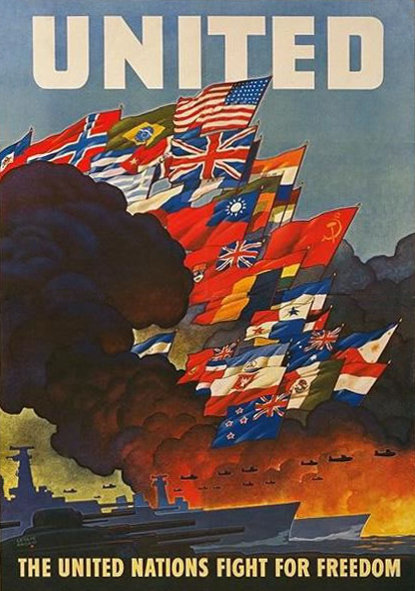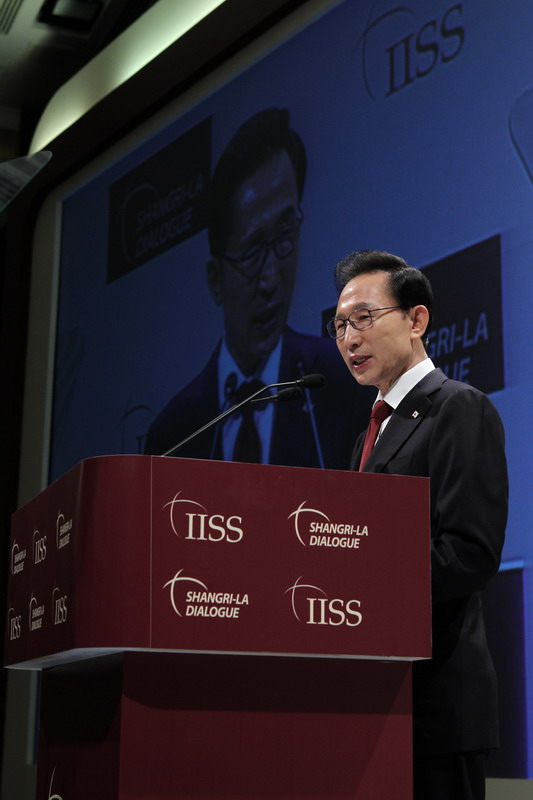Korea
Chapter 7 of the UN Charter was first invoked in Korea in 1950.
On June 25, 1950, North Korea (Democratic People’s Republic of Korea) invaded South Korea (Republic of Korea) at the 38th parallel. The aggression from North Korea to South Korea was determined as a “breach of peace,” under Article 39. Accordingly, the international community demanded the withdrawal of North Korea from the South in UN SCR 84, “having determined that the armed attack upon the Republic of Korea by forces from North Korea constitutes a breach of the peace.”
After several attempts, including UN SC Resolution 82 and 83, UN SC Resolution 84 provided the legal authorization of war against North Korea, “to assist the Republic of Korea in defending itself against armed attack and thus to restore international peace and security in the area.” In this way, it was a call for collective self-defense and for the maintenance of international peace and security.
Two interesting points should be noted. First, as the US was already providing assistance to South Korea, the resolution outlined that all forces and assistance be available to a unified command under the US. In this way, UN SCR 84 became a practical extension of pre-emptive assistance prior to any UN resolution provided for in Article 51.
Second, the resolution was voted seven for, none against, three abstentions, including Egypt, India, and Yugoslavia, and one boycott. At the time of the vote, the USSR had been boycotting Security Council meetings and so could not vote for or veto this resolution. Prior to the events on the Korean peninsula, the USSR had been trying to expel the Nationalist China representative from the UN, in favor of the People’s Republic of China representative. The representative of the USSR had hoped the boycott would forestall any further UN SC meetings, but meetings continued.
And, so, Russia’s boycott for a reason unconnected with the Korean situation, led to the UN SC vote to invoke military action for the first time in the organization’s history. This resolution has been considered the beginning of the Korean War.
The Gulf
40 years after the Korean War, Chapter 7 was invoked again in the Persian Gulf.
On August 2, 1990 Iraq invaded and annexed Kuwait. On November 29, 1990, the UN SC voted in favor of UN SC Resolution 678, after several prior attempts and resolutions to persuade Iraq to withdraw from Kuwait, citing Iraq to be “in flagrant contempt of the Security Council.”
Its consistent refusal to withdraw and its clear act of aggression were determined as “breaches of peace” and threats to international peace and security, under Chapter 7. And, so, the UN SC “authorize[d] Member States co-operating with the Government of Kuwait, unless Iraq on or before 15 January 1991 fully implements, as set forth in paragraph 1 above, the above-mentioned resolutions, to use all necessary means to uphold and implement resolution 660 and all subsequent relevant resolutions and to restore international peace and security in the area.”
The resolution was passed with twelve votes for, two against from Cuba and Yemen, and one abstention from China. China’s abstention can be best described as an act of self-interest and self-preservation. At the time of vote, sanctions had been placed on China following the Tiananmen Square protests in 1989. So, to ease tensions, China abstained in a vote on a resolution it would have normally vetoed.
With Iraq showing no intention to comply with the resolution and its deadline of January 15, Operation Desert Storm, a US led international coalition, was launched and the Gulf War began on January 17, 1991.
Iraq
A critical example of the use of Chapter 7 is that of UN SC Resolution 1441, passed by a unanimous vote by the Security Council in November 2002.
UN SCR 1441 was initially intended to provide Iraq with a “final opportunity” to comply with previous SC resolutions imposed on it throughout the Gulf War. These include UN SCR 678 and 687, in which the UN demanded that Iraq compensate Kuwait for the widespread looting conducted by its troops during the invasion. The resolution also stated that Iraq was in “material breach” of the ceasefire terms, which included Iraq’s continued possession and proliferation of weapons of mass destruction, chemical, biological, and nuclear weapons, and long-range missiles.” For these reasons, Iraq was considered to be threatening “international peace and security,” and “Iraq’s failure to cooperate with United Nations inspectors and the IAEA, and to complete the actions required under paragraphs 8 to 13 of resolution 687 1991.”
The initial intention of UN SCR 1441 was, therefore, that of reporting and discussing Iraq’s failure to comply with UN resolutions. Despite this initial intention, UN SCR 1441 did lead to intervention. Unlike previous resolutions, there was a lack of further decision, or a further resolution, to “sanction force” in Iraq. Instead, due to the lack of compliance by Iraq, the authority to use force under Resolution 678 had been revived. So, in retrospect, UN SC Resolution 1441, while it did lead to the Iraq War, was not as clear an authorization of intervention of war as previous invocations of Chapter 7 have been.
At first, Iraq agreed to comply with UN SCR 1441 and allow for UN inspection. While inspectors found no evidence of weapons of mass destruction production, they did find production of the Al-Samoud 2 Rockets, and several other hundred illegally imported missiles, determined as “rockets capable of flying beyond the 150 km limit that the UN had imposed.” This discovery would later influence Chief UN Weapons Inspector Hans Blix’s report, in which he reported that Iraq continued to provide insufficient evidence and contradictory information over the previously mentioned “material breach.” This, in turn, became a key factor to intervene in 2003.
Despite the Blix Report, France, Russia and China, all permanent members of the UN Security Council with veto power, wanted the inspectors to be given more time to continue to inspect, and stated that they would veto any resolution that would explicitly lead to war. They continued to believe that an intervention was unnecessary. However, continued US pressure and its belief that the lack of compliance with UN SCR 1441 by Iraq meant that there was no longer a need for further resolutions or periods of negotiations and diplomacy became key factors in the decision-making process.
So, the question remains, was Iraq threatening international peace and security, under the terms of Chapter 7? Unlike previous cases of Chapter 7 invocation, Iraq was not invading or occupying territory. Instead, UN SCR stated that it was the possession and proliferation of unsanctioned weapons, and continued disobedience towards the UN that made Iraq a threat to international peace and security.
All these cases show inconsistency and lack of neutrality in the use and invocation of Chapter 7, and illustrate the deeply inherent issues with the definition of “threats to international peace and security,” and the use of force in public international law more broadly. It is important to note that UN law and public international law is not subject to a higher authority, which makes it imperative for its members to address the issue.




